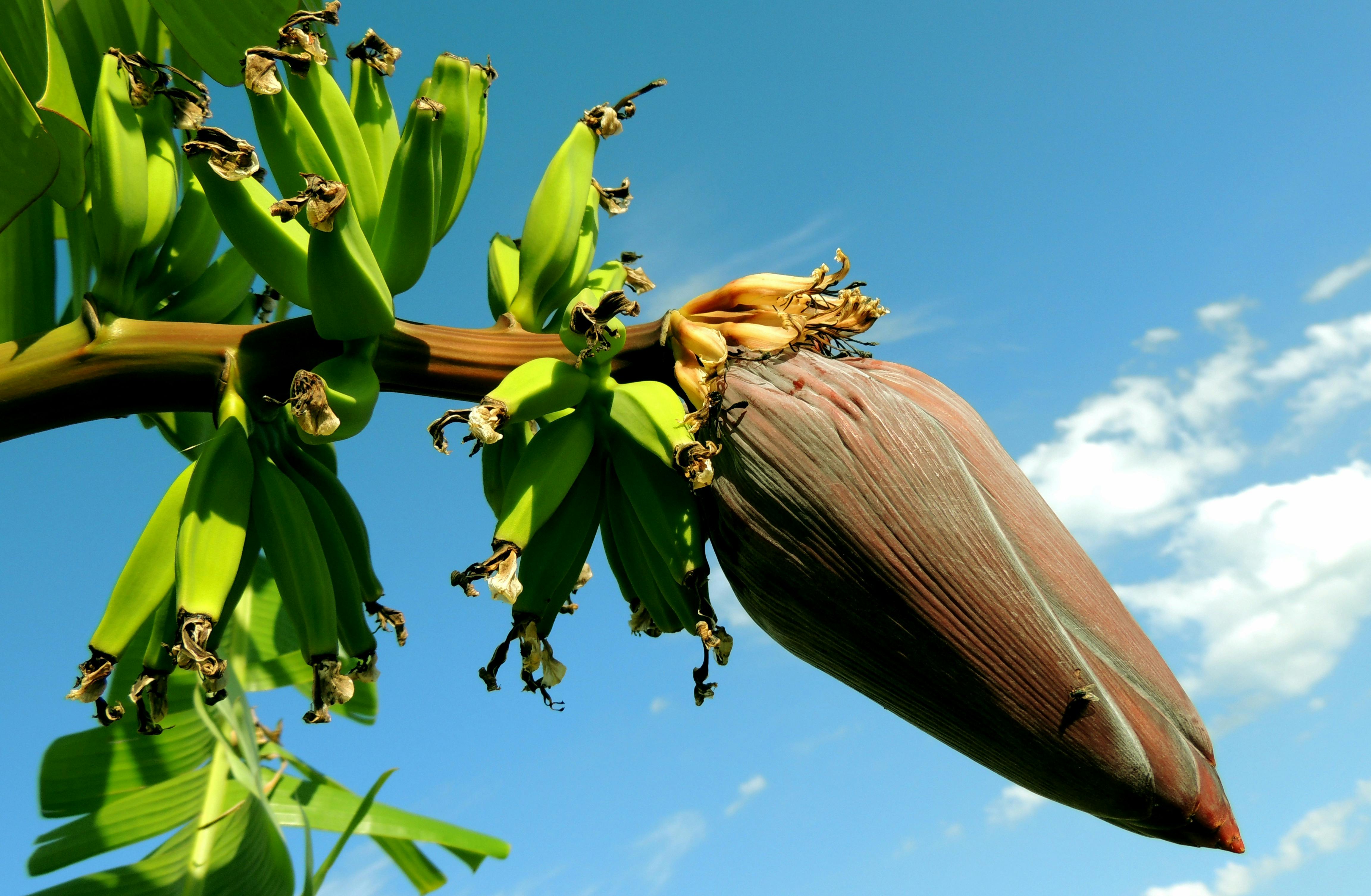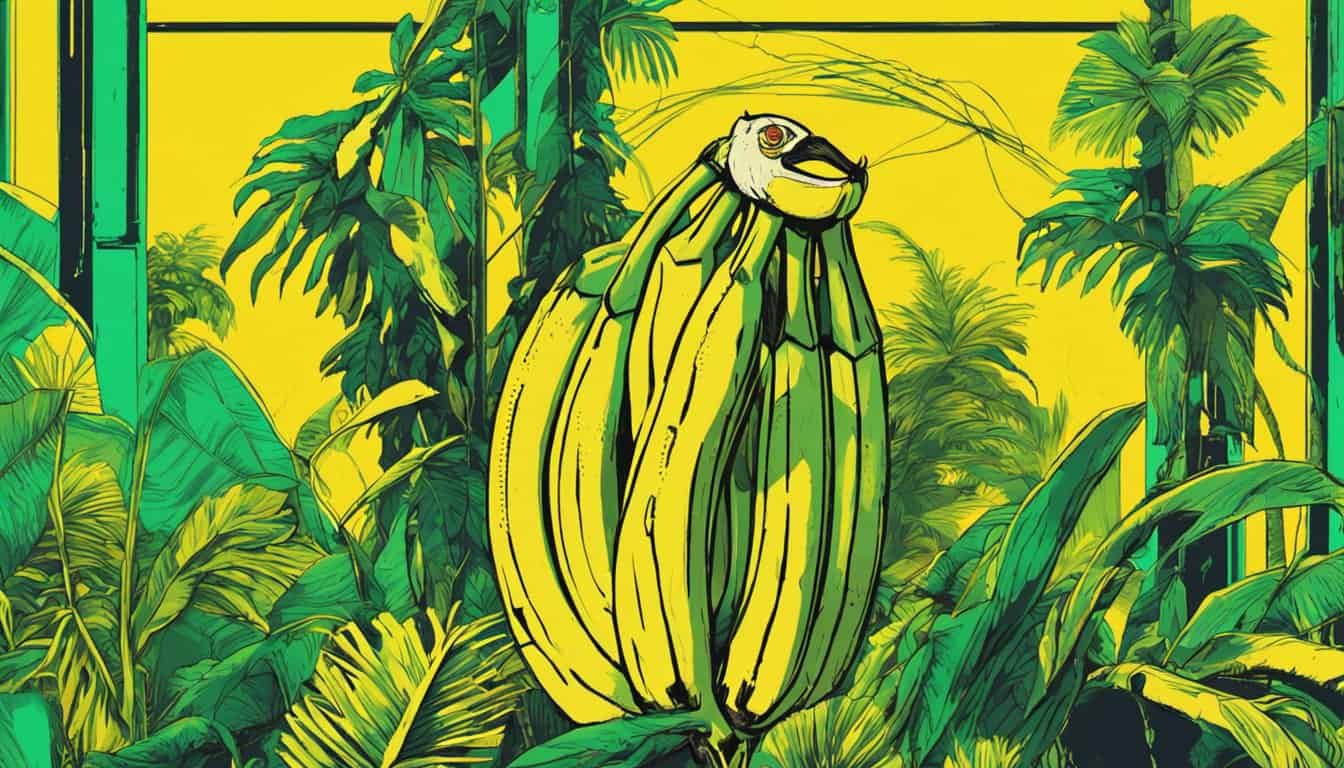Key Takeaways
- Stages of Growth: Banana plants progress through germination, vegetative growth, flowering, and fruiting, each crucial for their development and fruit production.
- Optimal Germination Conditions: Successful banana seed germination requires warm temperatures (25°C–30°C) and moist soil, typically taking 2 to 4 weeks.
- Rapid Vegetative Development: During the vegetative stage, banana plants exhibit fast leaf growth and pseudostem expansion, reaching heights of up to 3 meters in six months.
- Flowering and Pollination: After 9 to 12 months, banana plants flower, with most commercial varieties producing fruit without the need for pollination due to their parthenocarpic nature.
- Fruit Production and Harvesting: Bananas develop at a rate of 1.5 cm per day under optimal temperatures (26°C–30°C) and are harvested 9 to 12 months post-planting when fully grown and still green.
- Propagation Techniques: Asexual propagation methods, including suckers, ratoons, and tissue culture, ensure the continuous growth of healthy banana plants and maintain genetic consistency.

I’ve always been fascinated by banana plants. From their vibrant green leaves to the sweet fruit they produce, there’s something magical about their growth. Watching a banana plant go through its life cycle is like witnessing a beautifully orchestrated dance of nature.
Starting as a small shoot, these plants rapidly develop, reaching impressive heights in just a few months. Each stage, from flowering to fruiting, showcases the resilience and adaptability of bananas. Join me as we explore the incredible journey of a banana plant, uncovering the secrets behind its success and the vital role it plays in our ecosystems.
Germination
Banana plant germination marks the beginning of its life cycle. Understanding each phase ensures successful cultivation.
Seed Germination

Banana seeds require warm temperatures between 25°C and 30°C to initiate germination. Moist soil conditions support seed viability, promoting sprout development. Germination typically occurs within 2 to 4 weeks, depending on environmental factors.
Sprout Emergence
Once seeds germinate, sprouts emerge from the soil surface. These young shoots display a pale green hue and rapidly develop leaves. Sprout emergence signals the transition to the vegetative growth stage, setting the foundation for robust plant development.
Vegetative Growth
Transitioning from germination, my banana plant enters the vegetative growth stage, laying the foundation for its robust development.
Leaf Development
Rapid leaf growth characterizes this stage. Each new leaf emerges approximately every 7 to 10 days, reaching lengths of up to 2 meters. Leaves expand from the center outward, unfurling their large, green blades to capture maximum sunlight for photosynthesis.
Stem Expansion
The pseudostem thickens as it supports the plant’s increasing size. It can grow up to 3 meters tall within six months. Regular watering and optimal nutrient supply ensure the stem remains strong and flexible, preventing breakage during the plant’s subsequent fruiting phase.
Flowering
I observe that banana plants transition to the flowering stage after 9 to 12 months of growth, beginning the process of fruit formation.
Flower Formation
From the pseudostem’s rachis, banana flowers develop into a large inflorescence. Each inflorescence contains 15 to 25 flowers arranged in tiers. These flowers include both male and female types, which are crucial for fruit development.
Pollination
Banana plants typically depend on wind or insects for pollination. Most commercial varieties are parthenocarpic, allowing fruit to develop without fertilization. This characteristic ensures reliable fruit production regardless of pollinator presence.
Fruiting
Watching the banana plant transition from flowers to fruit is truly rewarding. This phase highlights the plant’s ability to produce the beloved bananas we enjoy.
Fruit Development
Once flowering concludes, each female flower transforms into a banana fruit. Typically, an inflorescence generates 15 to 25 bananas arranged in hands. Fruits grow approximately 1.5 centimeters daily, achieving full size in 2 to 3 months. Maintaining temperatures between 26°C and 30°C and ensuring consistent watering fosters healthy fruit growth.
Harvesting

Bananas are ready for harvest when they reach full size and remain green. Harvesting generally occurs 9 to 12 months after planting. I cut the entire bunch carefully using a sharp machete to avoid damaging the plant. Proper handling during harvesting minimizes bruising, ensuring the bananas maintain their quality for transportation and recipe use.
Fruit Development Data
| Parameter | Value |
|---|---|
| Growth Rate | 1.5 cm per day |
| Time to Maturity | 2 to 3 months |
| Optimal Temperature | 26°C to 30°C |
| Fruits per Hand | 10 to 20 bananas |
Propagation
Propagating banana plants ensures a continuous supply of healthy specimens. I use reliable methods to maintain plant vitality and optimize growth.
Asexual Methods
Asexual propagation maintains genetic consistency and accelerates plant growth. I employ techniques such as:
- Suckers: These offshoots emerge from the base, developing roots quickly when separated from the parent plant.
- Ratoons: Smaller shoots sprout from the underground rhizome, allowing multiple harvests from a single plant.
- Tissue Culture: Laboratory-grown plantlets provide disease-free propagation, enhancing scalability and uniformity.
Plant Health Management
- Nutrient Supply: Providing balanced fertilizers with essential macro and micronutrients promotes strong plant development.
- Watering Schedule: Consistent watering maintains soil moisture, critical for nutrient uptake and root health.
- Pest Control: Monitoring for common pests and applying targeted treatments minimizes damage and ensures plant resilience.
Conclusion
Watching a banana plant grow from a tiny shoot to a towering plant has been truly amazing for me. Each stage of its life cycle highlights the resilience and beauty of nature.
Growing bananas is not only rewarding but also connects us to the environment in a special way. I hope learning about their journey inspires you to appreciate these vibrant plants even more.
Frequently Asked Questions
What are the ideal conditions for banana plant germination?
Banana seeds require warm temperatures between 25°C and 30°C and moist soil conditions for successful germination. Typically, seeds germinate within 2 to 4 weeks, emerging as pale green sprouts. Maintaining these conditions ensures the transition to the vegetative growth stage, setting the foundation for a strong and healthy banana plant.

How fast do banana plants grow during the vegetative stage?
« The Banana in Religious Rituals: Discover Its Hidden Symbolism and Cultural Heritage
Sustainable Banana Farming Practices: Unlock Higher Yields and Eco Benefits Now »
During the vegetative growth stage, banana leaves develop rapidly, with new leaves emerging every 7 to 10 days and reaching lengths up to 2 meters. The pseudostem thickens to support the plant, potentially growing up to 3 meters tall within six months. Regular watering and optimal nutrient supply are essential to maintain strong and flexible stems for future fruiting.
How do banana plants flower and produce fruit?
After 9 to 12 months, banana plants enter the flowering stage. From the pseudostem’s rachis, an inflorescence with 15 to 25 flowers develops. Most commercial bananas are parthenocarpic, allowing fruit to develop without fertilization. Each female flower becomes a banana, with fruits growing about 1.5 centimeters daily and ready for harvest in 2 to 3 months under optimal temperatures and consistent watering.
What are the best methods for propagating banana plants?
Banana plants are typically propagated asexually using suckers, ratoons, or tissue culture. These techniques maintain genetic consistency and promote rapid growth, ensuring a continuous supply of healthy plants. Asexual propagation is preferred for its efficiency and ability to preserve desirable plant traits, making it ideal for both commercial and home cultivation.
How can I maintain the health of my banana plants?
Maintaining banana plant health involves providing balanced nutrients, consistent watering schedules, and effective pest control. Balanced nutrient supply supports robust growth, while regular watering ensures flexible stems and healthy development. Implementing pest management strategies enhances plant resilience, preventing diseases and promoting overall vitality.
When is the best time to harvest bananas?
Bananas are ready for harvest when they reach full size and remain green, typically 9 to 12 months after planting. Harvesting should be done carefully to minimize bruising, ensuring quality for transportation and culinary use. Proper harvesting techniques help maintain the fruit’s integrity and extend its shelf life.
Why are banana plants important for ecosystems?
Banana plants play a significant role in ecosystems by providing habitat and food for various species. Their rapid growth and large leaves contribute to soil health and moisture retention. Additionally, banana plants support pollinators like insects, enhancing biodiversity and ecosystem stability.
Can banana plants survive in different climates?
Banana plants are highly resilient and adaptable, thriving in a range of climates as long as they receive sufficient warmth and moisture. While they prefer tropical conditions, some varieties can tolerate subtropical and even temperate climates with proper care, such as greenhouse cultivation or seasonal protection.
How long does it take for a banana plant to produce fruit?
It typically takes 9 to 12 months for a banana plant to transition from planting to fruit production. This period includes germination, vegetative growth, flowering, and the fruiting phase. Optimal growing conditions and effective plant care can help ensure timely and abundant fruit yield.
What are common challenges in growing banana plants?
Common challenges in growing banana plants include pest infestations, such as nematodes and fruit flies, as well as diseases like Panama disease and Sigatoka. Additionally, maintaining consistent watering and nutrient supply can be difficult. Proper management practices, including regular monitoring and preventive measures, are essential to overcome these challenges.













